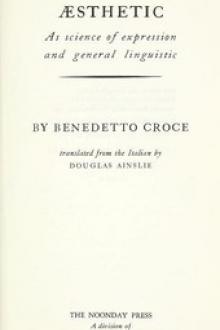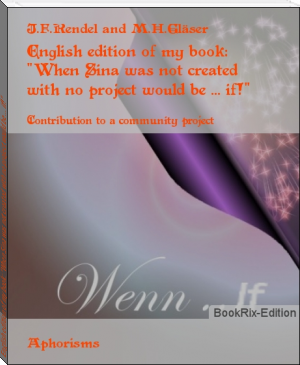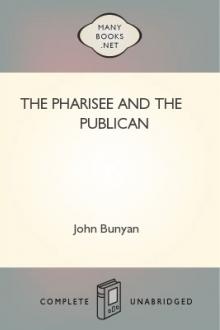The Sense of Beauty by George Santayana (ebooks children's books free .TXT) 📖

- Author: George Santayana
- Performer: -
Book online «The Sense of Beauty by George Santayana (ebooks children's books free .TXT) 📖». Author George Santayana
Instead we prefer to see through the medium of art — through the beautiful first term of our expression — the miscellaneous world which is so well known to us — perhaps so dear, and at any rate so inevitable, an object. We are more thankful for this presentation, of the unlovely truth in a lovely form, than for the like presentation of an abstract beauty; what is lost in the purity of the pleasure is gained in the stimulation of our attention, and in the relief of viewing with aesthetic detachment the same things that in practical life hold tyrannous dominion over our souls. The beauty that is associated only with other beauty is therefore a sort of aesthetic dainty; it leads the fancy through a fairyland of lovely forms, where we must forget the common objects of our interest. The charm of such an idealization is undeniable; but the other important elements of our memory and will cannot long be banished. Thoughts of labour, ambition, lust, anger, confusion, sorrow, and death must needs mix with our contemplation and lend their various expressions to the objects with which in experience they are so closely allied. Hence the incorporation in the beautiful of values of other sorts, and the comparative rareness in nature or art of expressions the second term of which has only aesthetic value.
Practical value in the same.
§ 52. More important and frequent is the case of the expression of utility. This is found whenever the second term is the idea of something of practical advantage to us, the premonition of which brings satisfaction; and this satisfaction prompts an approval of the presented object. The tone of our consciousness is raised by the foretaste of a success; and this heightened pleasure is objectified in the present image, since the associated image to which the satisfaction properly belongs often fails to become distinct. We do not conceive clearly what this practical advantage will be; but the vague sense that an advantage is there, that something desirable has been done, accompanies the presentation, and gives it expression.
The case that most resembles that of which we have been just speaking, is perhaps that in which the second term is a piece of interesting information, a theory, or other intellectual datum. Our interest in facts and theories, when not aesthetic, is of course practical; it consists in their connexion with our interests, and in the service they can render us in the execution of our designs. Intellectual values are utilitarian in their origin but aesthetic in their form, since the advantage of knowledge is often lost sight of, and ideas are prized for their own sake. Curiosity can become a disinterested passion, and yield intimate and immediate satisfaction like any other impulse.
When we have before us, for instance, a fine map, in which the line of coast, now rocky, now sandy, is clearly indicated, together with the windings of the rivers, the elevations of the land, and the distribution of the population, we have the simultaneous suggestion of so many facts, the sense of mastery over so much reality, that we gaze at it with delight, and need no practical motive to keep us studying it, perhaps for hours together. A map is not naturally thought of as an aesthetic object; it is too exclusively expressive. The first term is passed over as a mere symbol, and the mind is filled either with imaginations of the landscape the country would really offer, or with thoughts about its history and inhabitants. These circumstances prevent the ready objectification of our pleasure in the map itself. And yet, let the tints of it be a little subtle, let the lines be a little delicate, and the masses of land and sea somewhat balanced, and we really have a beautiful thing; a thing the charm of which consists almost entirely in its meaning, but which nevertheless pleases us in the same way as a picture or a graphic symbol might please. Give the symbol a little intrinsic worth of form, line, and colour, and it attracts like a magnet all the values of the things it is known to symbolize. It becomes beautiful in its expressiveness.
Hardly different from this example is that of travel or of reading; for in these employments we get many aesthetic pleasures, the origin of which is in the satisfaction of curiosity and intelligence. When we say admiringly of anything that it is characteristic, that it embodies a whole period or a whole man, we are absorbed by the pleasant sense that it offers innumerable avenues of approach to interesting and important things. The less we are able to specify what these are, the more beautiful will the object be that expresses them. For if we could specify them, the felt value would disintegrate, and distribute itself among the ideas of the suggested things, leaving the expressive object bare of all interest, like the letters of a printed page.
The courtiers of Philip the Second probably did not regard his rooms at the Escurial as particularly interesting, but simply as small, ugly, and damp. The character which we find in them and which makes us regard them as eminently expressive of whatever was sinister in the man, probably did not strike them. They knew the king, and had before them words, gestures, and acts enough in which to read his character. But all these living facts are wanting to our experience; and it is the suggestion of them in their unrealizable vagueness that fills the apartments of the monarch with such pungent expression. It is not otherwise with all emphatic expressiveness — moonlight and castle moats, minarets and cypresses, camels filing through the desert — such images get their character from the strong but misty atmosphere of sentiment and adventure which clings about them. The profit of travel, and the extraordinary charm of all visible relics of antiquity, consists in the acquisition of images in which to focus a mass of discursive knowledge, not otherwise felt together. Such images are concrete symbols of much latent experience, and the deep roots of association give them the same hold upon our attention which might be secured by a fortunate form or splendid material.
Cost as an element of effect.
§ 53. There is one consideration which often adds much to the interest with which we view an object, but which we might be virtuously inclined not to admit among aesthetic values. I mean cost. Cost is practical value expressed in abstract terms, and from the price of anything we can often infer what relation it has to the desires and efforts of mankind. There is no reason why cost, or the circumstances which are its basis, should not, like other practical values, heighten the tone of consciousness, and add to the pleasure with which we view an object. In fact, such is our daily experience; for great as is the sensuous beauty of gems, their rarity and price adds an expression of distinction to them, which they would never have if they were cheap.
The circumstance that makes the appreciation of cost often unaesthetic is the abstractness of that quality. The price of an object is an algebraic symbol, it is a conventional term, invented to facilitate our operations, which remains arid and unmeaning if we stop with it and forget to translate it again at the end into its concrete equivalent. The commercial mind dwells in that intermediate limbo of symbolized values; the calculator's senses are muffled by his intellect and by his habit of abbreviated thinking. His mental process is a reckoning that loses sight of its original values, and is over without reaching any concrete image. Therefore the knowledge of cost, when expressed in terms of money, is incapable of contributing to aesthetic effect, but the reason is not so much that the suggested value is not aesthetic, as that no real value is suggested at all. No object of any kind is presented to the mind by the numerical expression. If we reinterpret our price, however, and translate it back into the facts which constitute it, into the materials employed, their original place and quality, and the labour and art which transformed them into the present thing, then we add to the aesthetic value of the object, by the expression which we find in it, not of its price in money, but of its human cost. We have now the consciousness of the real values which it represents, and these values, sympathetically present to the fancy, increase our present interest and admiration.
I believe economists count among the elements of the value of an object the rarity of its material, the labour of its manufacture, and the distance from which it is brought. Now all these qualities, if attended to in themselves, appeal greatly to the imagination. We have a natural interest in what is rare and affects us with unusual sensations. What comes from a far country carries our thoughts there, and gains by the wealth and picturesqueness of its associations. And that on which human labour has been spent, especially if it was a labour of love, and is apparent in the product, has one of the deepest possible claims to admiration. So that the standard of cost, the most vulgar of all standards, is such only when it remains empty and abstract. Let the thoughts wander back and consider the elements of value, and our appreciation, from being verbal and commercial, becomes poetic and real.
We have in this one more example of the manner in which practical values, when suggested by and incorporated in any object, contribute to its beauty. Our sense of what lies behind, unlovely though that background may be, gives interest and poignancy to that which is present; our attention and wonder are engaged, and a new meaning and importance is added to such intrinsic beauty as the presentation may possess.
The expression of economy and fitness.
§ 54. The same principle explains the effect of evident cleanliness, security, economy, and comfort. This Dutch charm hardly needs explanation; we are conscious of the domesticity and neatness which pleases us in it. There are few things more utterly discomforting to our minds than waste: it is a sort of pungent extract and quintessence of folly. The visible manifestation of it is therefore very offensive; and that of its absence very reassuring. The force of our approval of practical fitness and economy in things rises into an appreciation that is half-aesthetic, and which becomes wholly so when the fit form becomes fixed in a type, to the lines of which we are accustomed; so that the practical necessity of the form is heightened and concentrated into the aesthetic propriety of it.
The much-praised expression of function and truth in architectural works reduces itself to this principle. The useful contrivance at first appeals to our practical approval; while we admire its ingenuity, we cannot fail to become gradually accustomed to its presence, and to register with attentive pleasure the relation of its parts. Utility, as we have pointed out in its place, is thus the guiding principle in the determination of forms.
The recurring observation of the utility, economy, and fitness of the traditional arrangement in buildings or other products of art, re-enforces this formal expectation with a reflective approval. We are accustomed, for instance, to sloping roofs; the fact that they were necessary has made them familiar, and the fact





Comments (0)